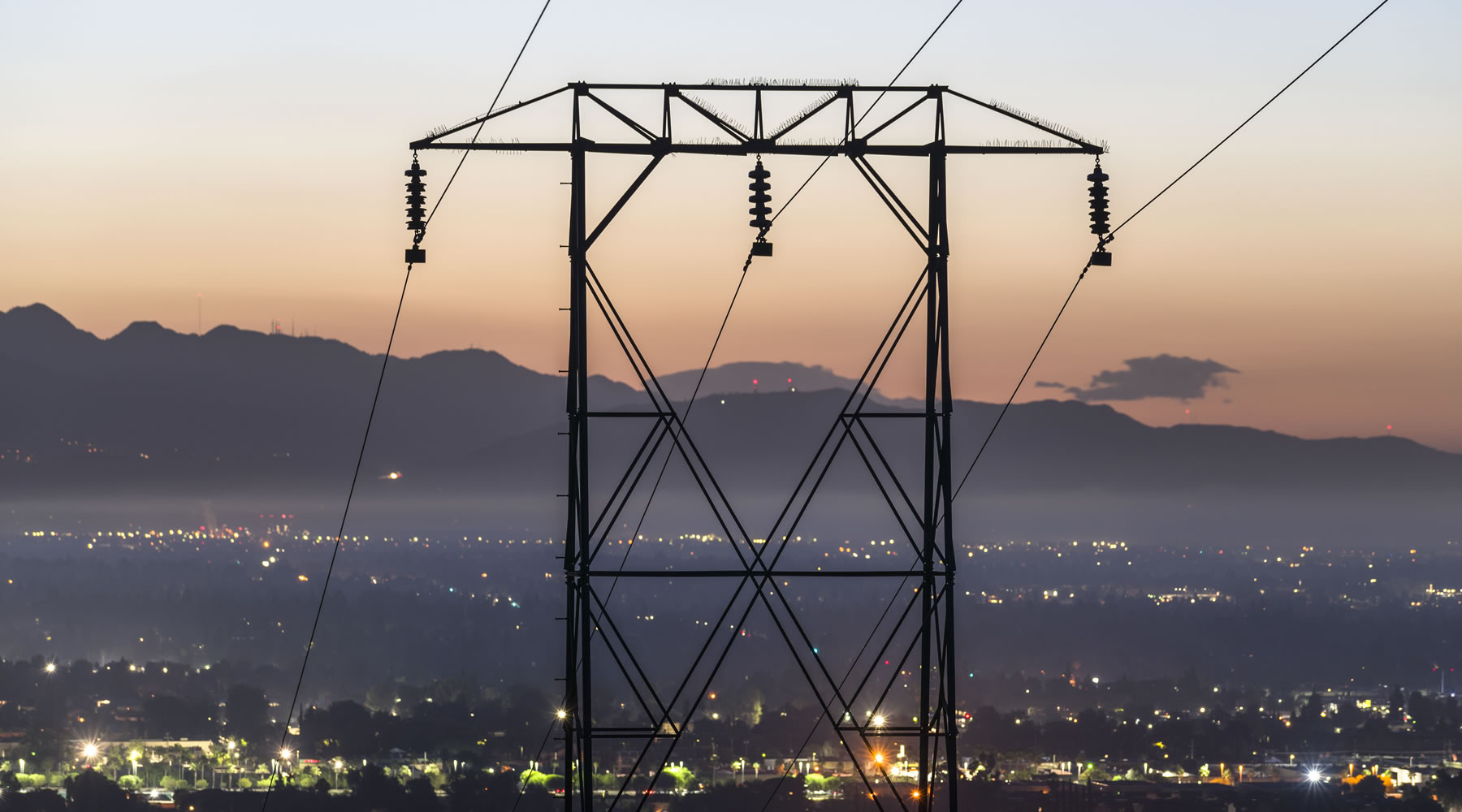Californians recently suffered through the largest planned power outage in the state’s history. Nearly 800,000 customers – equivalent to an estimated 2.5 million people – had their power shutoff for multiple days under the “Public Safety Power Shutoff” program, aimed at preventing the state’s electrical equipment from sparking wildfires.
Less than two weeks later, nearly half a million Californians faced the second round of power shutoffs. Now, Californians are being warned that the biggest shutoff yet might be looming over the weekend. Is this California’s new normal?
Costs and impacts of blackouts on California’s businesses and communities
Extreme weather and power outages are rising in frequency and intensity nationwide. Since 2005, climate disasters have cost the U.S. economy $1.1 trillion. California’s wildfire-induced rolling blackouts along with the east coast’s storm-induced power outages underpin a growing concern nationwide about access to reliable energy.
From coast to coast, the nation’s power grid is being impacted by a confluence of a changing climate and an aging grid. The grid has relied on centralized generation with a long-distance transmission line system since its inception; it’s only in the last couple of years that this paradigm has put entire populations in California at risk of wildfires due to hotter and drier weather.
The cost of patching up the existing grid to adapt to climate change and reduce the risk of wildfires is staggeringly high. For example:
- There are 3.7 million wooden poles in California. It would cost $15,000 to replace each with metal poles, requiring $56 billion and many years to replace the existing, aging infrastructure.
- Alternatively, PG&E calculates that it costs $3 million per mile to move power lines underground versus the $800,000 per mile it takes to erect new above ground lines. Some estimates suggest that it would cost PG&E $243 billion to underground all of its lines, or around $15,000 per customer.
Other mitigation steps like trimming vegetation, installing sensors, and replacing equipment can be risky and are also expensive at scale.
Because the nation’s power grid will have trouble adapting quickly and without immense investment, communities and businesses need to prepare for outages on their own. The best way to brace for outages – which now are lasting longer than ever – is to treat the grid as backup, and have your own primary source of power onsite.
Treating the grid as backup with a microgrid
The great news about microgrids is that they don’t just protect businesses and communities from the costly consequences of power outages – with broad enough adoption, they start to address the root cause of wildfire dangers.
Microgrids are sources of electric power that can operate independently of the main power grid indefinitely. As opposed to standby diesel generators that only come online in the event of an outage, microgrids provide reliable and continuous power during normal operations and power disruptions.
Advanced microgrid solutions generate and use power in the same location, resulting in less reliance on long-distance transmission lines that run through fire-prone areas. By reshaping the grid, microgrids eliminate the danger of downed live wires sparking fires in dry conditions. They also eliminate the need to spend on maintaining or replacing fragile aerial lines.
Safety shutoffs are California’s ‘new normal’ and will likely be a reality for the next ten years or more. Businesses must turn to microgrids for their own protection, and utilities should encourage customers to do so to help manage wildfire risk.
A recap of the largest planned power outage in state history
In an effort to understand the ripple effect of planned power outages and those who are impacted by them, Bloom is monitoring the rollout of outages, the time until re-energization, and the cost to businesses and communities, with the ultimate goal of helping accelerate the state toward a solution.
As part of this effort, we’ve compiled a comprehensive, minute-by-minute timeline of the October 9th-12th power outage, including the impact of the shutoff on communities, schools, and businesses.
Timeline of Public Safety Power Shutoff (PSPS)
Oct 6 – 9:04 PM: Initial warning of potential PSPS, based on strong and dry winds in Northern and Central CA
Oct 7 – 11:19 AM: Announcement that 30 CA counties may be at risk of a PSPS
Oct 8 – 10:11 AM: High volume of traffic causes PSPS resource websites to crash
We are currently experiencing high volume of traffic to our website & understand your frustration w/ the delay of accessing #PSPS related web pages. We apologize for the inconvenience and thank you for your patience as our team is working as quickly as possible to restore access. pic.twitter.com/9qTsDxbiNE
— PG&E (@PGE4Me) October 8, 2019
Oct 8 – 1:33 PM: PSPS is officially announced; power shutoffs to begin just after midnight
Oct 8 – 2:00 PM: Announcement that customers may lose power even if they’re not experiencing extreme weather
Customers notified of a #PSPS may be affected by a power shutoff even though they are not experiencing extreme weather conditions in their location. The electric system relies on power lines working together across cities, counties and regions. https://t.co/X1ClEBDDlC pic.twitter.com/knijvVdJs1
— PG&E (@PGE4Me) October 8, 2019
Oct 8 – 2:10 PM: Community Resource Centers to be opened in PSPS areas, daylight hours only
Oct 8 – 3:40 PM: Announcement that 34 CA counties will be impacted by PSPS; ~800,000 customers will lose power (customers are defined as electric meters, meaning millions of people will be impacted)
Oct 8 – 6:20 PM: UC Berkeley – which instructs more than 40,000 students across its programs – cancels classes for October 9; UC Berkeley went on to close campus for the following two days
Oct 8 – 9:18 PM: Warning of potential PSPS in Southern CA due to weather conditions
We’re closely monitoring weather conditions in our service territory and some cities are under consideration for Public Safety Power Shutoffs.
Please note that no power has been shut off for customers at this time. For the latest updates, visit: https://t.co/wo6v2jR8dx pic.twitter.com/nu4yJcJqOm
— SCE (@SCE) October 9, 2019
Oct 8 and 9: 70 mph winds experienced in PSPS-impacted area, causing 50 instances of damage to electric system (announced October 12)
Oct 9 – 4:16 AM: Announcement that ~500,000 customers lost power just after midnight, completing phase one of safety shutoffs
Oct 9 – 6:31 AM: National Weather Service confirms “extreme” fire outlook in Northern CA
Storm Prediction Center has portions of the North Bay and Northern California in it’s rare “Extreme” Fire Wx Outlook for later today. #CAwx #OneLessSpark #FireWeather #RedFlagWarning pic.twitter.com/e20yAzGdP3
— NWS Bay Area (@NWSBayArea) October 9, 2019
Oct 9 – 11:12 AM: High volume of website traffic further delays access to PSPS web pages
Oct 9 – 2:04 PM: Public notice from utilities: while backup power can be helpful, improper use can risk damage to property and lives
Oct 9 – 2:36 PM: Santa Clara County calls for state of emergency declarations from the State of California and the federal government
Officials in Santa Clara County have declared a state of emergency due to the @PGE4Me shutoffs. News conference coming soon. The shutoffs are expected in the South Bay between 12-5pm. pic.twitter.com/kV1e0KNfZx
— Tatiana Sanchez (@TatianaYSanchez) October 9, 2019
Oct 9 – 2:56 PM: City of San Jose officials declare a local state of emergency; city to dispatch services to medical care facilities and medical baseline customers who are unable to be reached
Oct 9 – 7:23 PM: Stanford economist Michael Wara estimates power shutoff could cost as much as $2.6 billion
Oct 9 – 10:34 PM: Announcement that ~234,000 additional customers lost power in 10 Northern and Central CA counties in the afternoon, completing phase two of safety shutoffs
Oct 10 – 1:45 AM: Alternative website launched to supply PSPS info
Oct 10 – 9:42 AM: Announcement that third and final phase of safety shutoffs will commence at 10am, ~4,000 customers to lose power
Oct 10 – 10:12 AM: Announcement that ~173,000 customers in parts of 8 Southern CA counties may lose power
Southern California Edison said that, given the strong Santa Ana winds forecast for the area, power could be cut off to more than 173,000 customers in parts of eight Southland counties.
Search an address to see if you could be affected. https://t.co/qWm0FAGGQP
— Los Angeles Times (@latimes) October 10, 2019
Oct 10 – 11:15 AM: Power restoration begins in some Northern and Central CA counties; ~126,000 customers restored, ~600,000 still without power
Oct 10 – 10:59 PM: Power restored to ~426,000 customers, but ~312,000 remain without power
Oct 10 – 12:00 PM: Red Flag Warning from the National Weather Service lifted for most of Bay Area
Oct 11 – 12:26 PM: 74% of customers have power restored
Oct 11: CalMatters announces more than 460 schools in 21 counties from Los Angeles to Humboldt shut their doors due to power shutoffs and over 230,000 California students missed class
Oct 12 – 6:47 PM: 100% of ~738,000 customers restored; 6,300+ personnel and 44 helicopters engaged in inspection and restoration
Oct 12: Santa Rosa estimates cost of power shutoff to be $250,000 — a combination of staff salaries, overtime, fuel, equipment, food, supplies, and other costs
Oct 12: City of Calistoga proclaimed the PSPS event a Local Emergency; preliminary estimates of costs from PSPS are about $40,000 to $50,000
Oct 14 – 3:50 PM: California Public Utilities Commission (CPUC) issues series of sanctions for failures in execution in “largest planned shutoff in state history”
PUC orders PG&E to reform power shutoff approach and calls for a series of measures to improve the process. Last week’s #PSPS “created an unacceptable situation that should never be repeated,” the commission stated. https://t.co/YnzJSmyMdk h/t @thejdmorris @californiapuc
— CA Assoc of Counties (@CSAC_Counties) October 15, 2019
Oct 14 – 4:31 PM: California Governor demands compensation for impacted customers in the form of automatic credit or rebate
Governor @GavinNewsom just put out this letter, demanding that @PGE4Me make customers whole foe last week’s #PSPS. How does $100 per customer and $250 per business sound? #pgeshutoff https://t.co/cCdHPcfwNT
— Doug Sovern (@SovernNation) October 14, 2019
Oct 15 – 8:34 AM: UC Berkeley researcher reports power shutoff wiped out $500,000 in cancer studies
Oct 15 – 7:57 PM: Preliminary review confirms 100+ incidents of damage and hazard locations in PSPS-impacted area, any of which could have been a source of wildfire ignition had the lines been energized
#PSPS: Damage and Hazards Found after Safety Shutoff Confirm that Turning Off Power was the Right Decision – Preliminary Review Confirms More than 100 Incidents of Damage and Hazard Locations. https://t.co/F9Y7H1avOS pic.twitter.com/1c1U2IDkUU
— PG&E (@PGE4Me) October 16, 2019
Oct 17: Mayor Liccardo of San Jose petitioned the city council to create a municipal utility “for the purposes of strategic development of microgrids”
Oct 17: Russian River Brewing Company rented a two-megawatt generator at a cost of $30,000 per month; it ran for 48 hours during the outage to save the beer from spoiling, at an additional cost of $10,000 per day in fuel. “It sucks, because it’s $50,000 we really can’t afford to spend right now,” co-owner of the company said. “But we can’t afford not to. If we lose all that beer, it’s tons of lost sales.”
Oct 17: Badass Beard Care, an e-commerce company, said that as a result of outage delays, it received an automated warning from Amazon that its account was in jeopardy of being canceled. “Once you lose that, customers won’t go to your site,” the company’s CEO said. “That’s worth about a million [dollars] a year.”
Oct 20 – 8:52 PM: Warning of a severe wind event places 17 CA counties at risk of a PSPS, again



